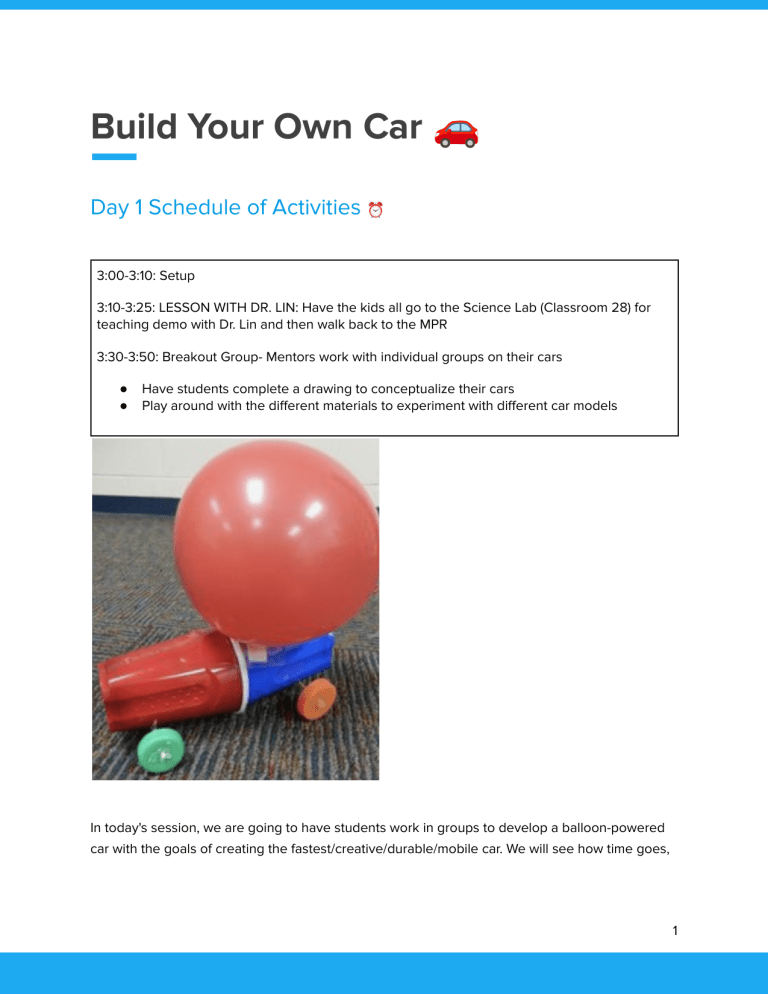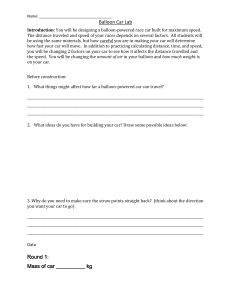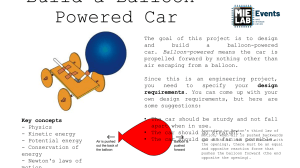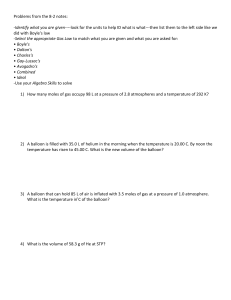
Build Your Own Car 🚗 Day 1 Schedule of Activities ⏰ 3:00-3:10: Setup 3:10-3:25: LESSON WITH DR. LIN: Have the kids all go to the Science Lab (Classroom 28) for teaching demo with Dr. Lin and then walk back to the MPR 3:30-3:50: Breakout Group- Mentors work with individual groups on their cars ● ● Have students complete a drawing to conceptualize their cars Play around with the different materials to experiment with different car models In today's session, we are going to have students work in groups to develop a balloon-powered car with the goals of creating the fastest/creative/durable/mobile car. We will see how time goes, 1 but likely we are going to stretch this activity into two sessions so that students have time to create different prototypes and then have a race on Thursday. As students work on different prototypes, they must complete this worksheet to measure the speed (stopwatch), distance (ruler) and weight (weight scale) - see guide and here Materials Category Potential Materials Base small cardboard square, empty water bottle, legos, dixie cup, paper plate, Wheels bottle caps, blank CD’s Axels wood skewers, straws, Materials used for building the car tape (duct, painters, etc.), silly putty, aluminum foil, paint, Lesson on the Science Behind Air Powered Cars I found this cool breakdown here that talks about the science geared towards kidshttps://sciencewithkids.com/Experiments/cool-experiments/air-powered-car-experiment.html In this experiment kids get to experience Newton's second law of motion. In this case, energy in the form of compressed air is stored in the balloon. When the air is allowed to release the car experiences an unbalance force and begins to move. When air is released, it acts like a spring. The compressed air inside the balloon is at a higher pressure than the air outside the balloon. When the air is allowed to escape, it rapidly flows out of the balloon, resulting in a force. Since the balloon is secured to the car, the resultant force powers the car forward. Since the balloon can only store a certain amount of energy, there are two factors that kids can control to increase the speed of the air car and the distance the car travels. The two factors are the weight of the car and the amount of friction experienced by the moving parts of the car. Parts 2 like the wheel/axle connection and the actual wheel connection with the ground have a frictional loss of energy. The more narrow the wheels, the less frictional loss with the ground. The less contact between the axle and the wheel shaft, also results in less frictional loss. WORKSHEET 3




